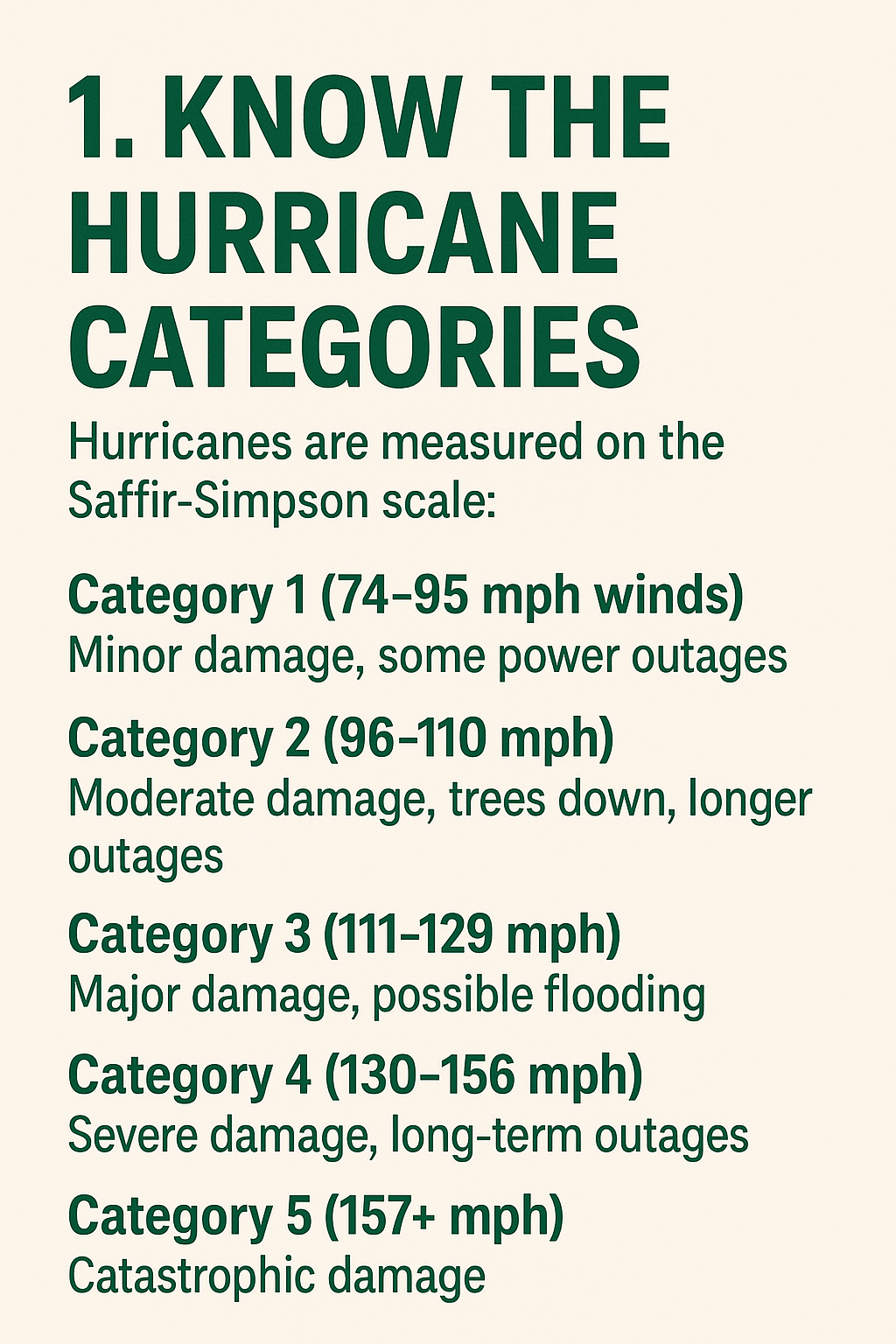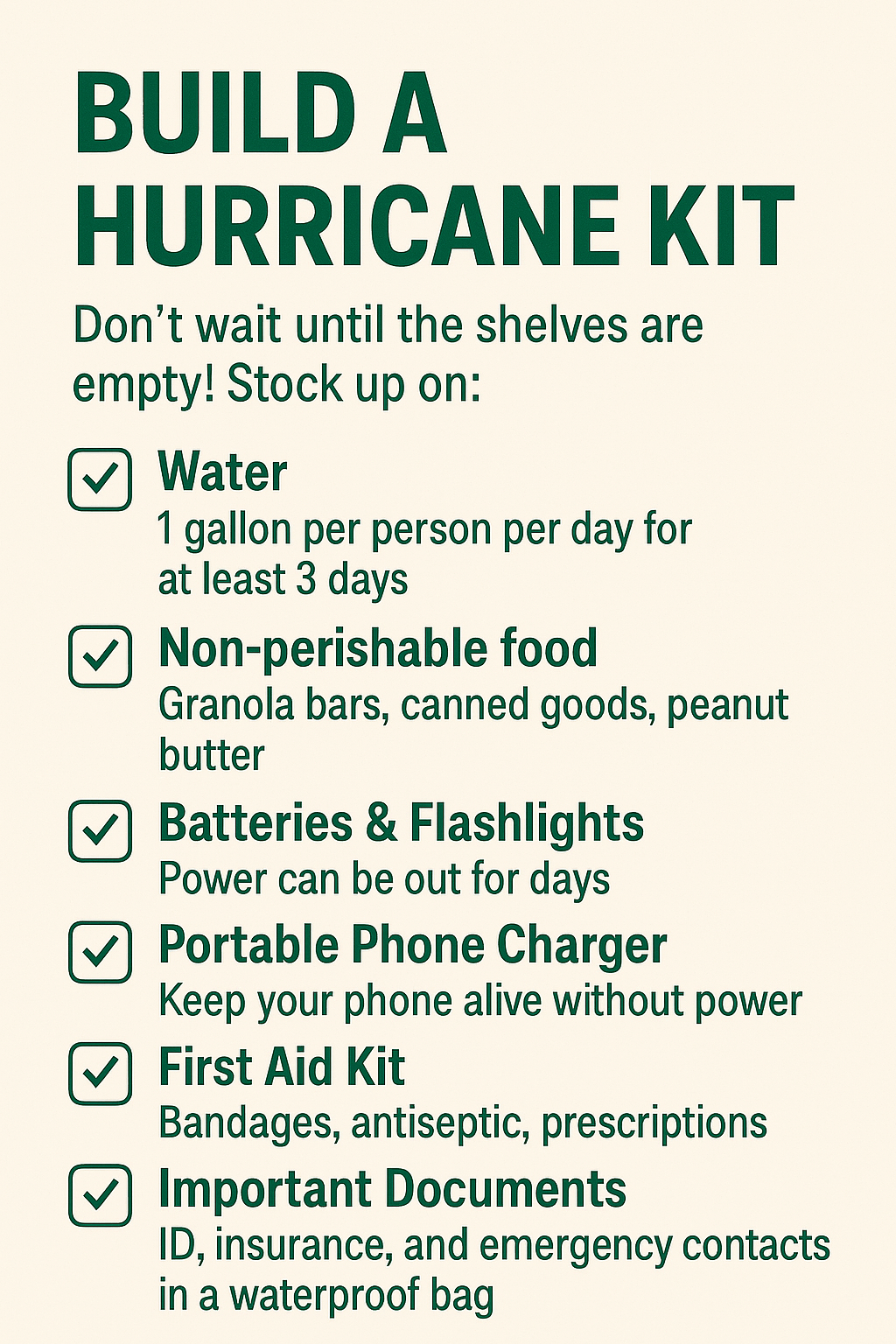Incoming Freshman! What do do when a hurricane Hit? Get your checklist to try to stay safe when a Hurricane touches Florida. You will need to know what to do when a hurricane warning is issued. Hurricanes have swept through Florida in the past, and while the U is well-prepared, your safety depends on knowing what steps to take before, during, and after the storm.
This guide will walk you through what every incoming ’Cane should know when hurricane season (June 1 – November 30) is in full swing.

1. Know the Hurricane Categories
Hurricanes are measured on the Saffir-Simpson scale:
- Category 1 (74–95 mph winds): Minor damage, some power outages.
- Category 2 (96–110 mph): Moderate damage, trees down, longer outages.
- Category 3 (111–129 mph): Major damage, possible flooding.
- Category 4 (130–156 mph): Severe damage, long-term outages.
- Category 5 (157+ mph): Catastrophic damage.
Even a Category 1 can disrupt campus life—don’t underestimate it.
2. Stay Informed
When a storm is brewing, you need accurate and timely info:
- University Alerts: The University of Miami uses an emergency notification system—keep your contact info updated in CaneLink.
- Local News & Apps: WPLG Local 10, NBC 6 South Florida, National Hurricane Center app.
- NWS Alerts: Enable Wireless Emergency Alerts on your phone.
3. Build a Hurricane Kit

Don’t wait until the shelves are empty! Stock up on:
- Water: 1 gallon per person per day for at least 3 days.
- Non-perishable food: Granola bars, canned goods, peanut butter.
- Batteries & Flashlights: Power can be out for days.
- Portable Phone Charger: Keep your phone alive without power.
- First Aid Kit: Bandages, antiseptic, prescriptions.
- Important Documents: ID, insurance, and emergency contacts in a waterproof bag.
4. Know Where to Shelter
If you live on-campus:
- UM will direct students to designated shelter areas in hurricane-resistant buildings.
- You may be relocated to another residence hall for safety.
If you live off-campus:
- Find the nearest Miami-Dade County hurricane shelter ahead of time.
- Make sure your apartment complex follows hurricane prep protocols (storm shutters, sandbags).
5. Before the Storm Arrives
- Fill your gas tank in case of evacuation.
- Withdraw cash (ATMs may be down).
- Charge all devices.
- Secure or bring inside anything that could blow away—patio furniture, bikes, plants.
- Freeze water bottles (they’ll help keep food cold if the power goes out).
6. During the Hurricane
- Stay indoors and away from windows.
- Don’t open doors to “check the wind”—flying debris is dangerous.
- Keep flashlights handy—avoid candles to reduce fire risk.
- Stay tuned to official alerts (battery-powered radio if needed).
7. After the Storm
- Wait for official “all clear” before going outside.
- Watch out for downed power lines and flooding.
- Check UM communications for campus reopening updates.
- If you evacuated, don’t return until officials say it’s safe.
8. Final Tips for Freshmen
- Hurricanes can be stressful, but UM has a strong emergency management plan.
- Connect with friends or neighbors before hurricane season to create a support network.
- Keep an emergency backpack ready during the season so you’re not rushing last-minute.

Bottom Line:
South Florida’s hurricane season is part of life here—but with preparation, you can ride out storms safely. Remember, the University of Miami prioritizes student safety, and when you follow these tips, you’ll be ready for whatever Mother Nature throws your way.
